Creon Upton – 11 April, 2011
While I acknowledge that an artist-run space has only the vaguest, slimmest responsibility to the general public, nonetheless the context in which ABC is beginning its life, and the moribund relationships between art and the public that I have tendentiously extracted from Keating's work, make me concerned at the extent of the chasm that exists between much serious art practice and the wider community.
Christchurch
Ash Keating: Activate 2750
Rob Hood: Leap into the Driveway and Other Re-joiners
25 March - 2 April 2011
Keep cool, but care.
- McClintic Sphere
It is somewhat interesting to contemplate the phenomenal success of the recent Ron Mueck show at the Christchurch Art Gallery (if we may measure art “success” by visitor numbers - a problematic judgement, certainly, but one that is to an extent defensible in the context of a public gallery).
I suspect that a large part of Mueck’s popularity came down to two or three interrelated factors. First, the works were about the visitors; they seemed to aim at nothing beyond the literal expression of human physicality, the corporeal reality of our everyday bodily existences. In that sense, this exhibition appealed immediately to the visitor’s basic narcissism while giving succour to shared insecurities around bodies and how we look in our nakedness. The honesty of the work gave the public both something to say about it and something to appreciate about it. The proximity we were allowed to the pieces contributed to this: they were not roped off, not in some strategic way made other to us the viewers. To the greatest extent possible, the gallery allowed its visitors to commune with the works.
And at the same time this intimacy - the show’s being about us, speaking to us, mingling with us - was antithetical to most other experiences of similarly audience-directed art. The public has come to expect that when art is about us, speaks to us, and mingles with us, then it is almost certainly also going to be wagging some admonitory, arcanely sanctimonious finger at us. The lack of a feeling of judgement being rendered was what really made Mueck appeal to the public.
Related to these observations is the sense that Mueck’s show was in no way a show of Art About Art. Art that is about art is immediately alienating to Jane and Joe Public: it is not concerned with them, speaks not to them, distances itself from them - while still managing to accuse them, but silently, of ignorance and unsophistication. (Of course, it might be argued that its phenomenal popularity made the Mueck show more about art than any of the most meticulously referential work out there, but I’ll let that fish go for now.)
Anyway, it strikes me that the Mueck show gave relief from what I imagine is a feeling out there that Art only speaks directly to the people when it seeks to chastise them for some failing or another.
And what’s got me thinking about all this is Ash Keating’s video work Activate 2750 at the new ABC gallery in Christchurch. The work depicts an intervention staged at a waste management facility in Penrith, Sydney, with assorted garbage being extracted from the facility and given some sort of new life, beyond that of throw-away quasi-utility, constructed under the symbolic auspices of the kind of vacuous myth-making that may or may not constitute a viable programme for an ephemeral, protean, late-capitalist, postmodern aesthetic.
The video is not intended as a documentation of the original intervention, but it does serve as a curious insight into that intervention’s life-span as a physical event.
Toward the end of the video - which in itself serves to narrativise the intervention, creating something of a morality tale - passers-by stop to observe the heathenistic antics of a group of garbage-clad celebrants as they frolic obscurely and Dionystically around the heap of reconstituted rubbish that the intervention has collected together. But this drama is all taking place behind a high wire fence, and the observers - safely from the perspective of the uninvolved spectator-of-spectacle - evince rapt amusement, curiosity, and passing interest in this unnameable, unfolding event.
Yet this is in stark contrast to a passage earlier in the piece, where the same figures - whose robes conceal their faces, calling up paranoid notions of Terrorists From The East - push shopping trolleys loaded with carefully organised trash through a Westfield shopping centre. Passing shoppers, caught on camera alongside this peculiar crew, are conspicuously unmoved by what’s happening around them. There is a palpable, wilful refusal in the air, an utter reluctance to engage even fleetingly with this anonymous and weirdly menacing presence. The public reads the intervention as what it is - Art - and they find in it only critique and mockery directed unmistakably at them - and so they repudiate it, and they deny it, and they look through it and past it with their cold and defensive and unfocused eyes.
We cannot escape our contexts.
And this reading that I bring cannot but be influenced by recent dramas in Christchurch, where for a moment we all - except for the most resolutely stage-managed of us - forgot our pretensions in the name of something slightly more urgent, more immediate, more important basically.
And while that memory lingers, this show that I am reviewing opens - postponed by the movements of the earth - at a new Christchurch gallery, run by a coterie of recent Ilam graduates who have taken the admirable step of establishing a fresh venue for art in this city.
ABC was scheduled to host its inaugural opening in early March, and back then Addington seemed a curious choice of location. Now it can only seem peculiarly prescient. That part of town went largely unscathed, and the Addington Coffee Co-op - just down the street from the gallery - has surfaced as the caffeinated joint-of-choice for a burgeoning selection of the city’s beautiful youths and would-be urban sophisticates.
And while Lincoln Road - Christchurch’s answer to Dominion Road in many ways - is fairly unattractive in itself, like its northern sister it is dotted with exotic-seeming precincts and has always suggested possibilities for some kind of down-at-heel metropolitan chic.
And while I acknowledge that an artist-run space has - in contrast to the city gallery - only the vaguest, slimmest responsibility to the general public - being as it is quintessentially a means of bringing art practitioners together for the sake of their work - nonetheless, the context in which ABC is beginning its life, and the moribund relationships between art and the public that I have somewhat tendentiously extracted from Keating’s work, make me concerned at the extent of the chasm that exists between so much serious art practice and the community at large. The more that serious art remains outside of the conversational threshold, and is perceived as merely snide, self-referencing and holier-than-thou, the more we will find cross-over becoming solely the realm of the bureaucrat, the official, and the aspiring politician, increasingly presented through the kinds of sanctioned tropes that make fools of everyone involved, shutting out possibilities for honesty and forbidding meaningfulness.
The second room at the ABC show features three works by Rob Hood, a Christchurch artist whom I greatly admire, not least because his work generally does achieve the kind of cross-over I am discussing here. In photographs, sculptures and installations, Hood often references the laddish car culture that so prevails among the people of this nation (Motosoc is one of the largest clubs at the University of Canterbury), but his work does not constitute critique so much as wry, observational amusement - and his wit, one feels, would be appreciated as much by open-minded car enthusiasts as by discerning members of the art community. His horizons point to the retreating, diminishing hope of a secular god, and he encourages his art to embody that sour, unavoidable entropy-within-entertainment that can only be adverted to with recourse to a dozen beers and a few sticky buds to get us through the night.
Here, the photographic work Leap into the Driveway - previously shown at the Auckland Triennial Last Ride in a Hot Air Balloon - makes art-historical reference to Yves Klein’s Leap into the Void, from the ironic distance of this Photoshop World in which we live - where illusion is de rigueur, while the studied roughness that Hood achieves takes on the careful subtlety and cleverness of Art. But at the same time, the image works independently in its own right - as a slightly appalling, slightly hilarious take on the Jackass culture, where such gestures are less self-consciously existential enquiries than testimony to an undiagnosed desperation at the heart of Western masculinity.
Similarly, Docking, which features two Nifty Fifties fused together, welded into a mechanical kiss, speaks ironically of the futility of imbuing our machines with symbolic, psycho-sexual significance. The title of the piece refers to a particular male homosexual erotic practice [look it up], making a further, none-to-subtle suggestion as to the artist’s intent in creating what is in itself quite a charming and beautiful work.
But this business of the heavily symbolic naming of works does disquiet me to an extent (especially, as in this case, when these titles are not even displayed in the gallery). Hood’s third piece in the show features a long row of hanging face-cloths - The Northland Flannels. This strikes me as the kind of art-historical in-joke that purports to give meaning to an otherwise mundane piece of work, and that represents nothing much beyond Hood’s public airing of his private conversations and artistic anxieties. My initial reaction was a kind of curmudgeonly offence-taking on behalf of McCahon’s seriousness, but at the same time that reaction immediately gives me pause - and compels me reluctantly to contemplate a kind of pyrrhic success in Hood’s gesture, especially as I consider the call for “vacuous myth-making” that I described above.
But I still wonder about the efficacy, the point, and the extent to which I should care.
Overall, ABC has kicked off its life with a strong, engaging show, and the people behind it - Matt Akehurst, Zhonghao Chen, Oscar Enberg and Sebastian Warne - deserve thanks and applause for helping us to remember that “going forward” and “rebuilding” are not necessarily notions that should be exclusively understood as the domain of those who would demand, at whatever cost, the resurrection of debased economies of consumption, operating under the invisible hand of carefully masked authoritarianism.
Creon Upton
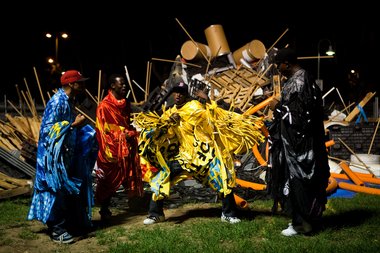
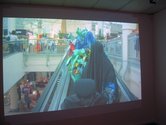
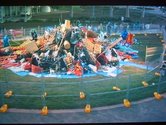
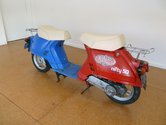
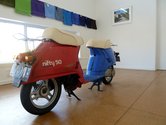
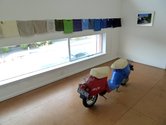

 Two Rooms presents a program of residencies and projects
Two Rooms presents a program of residencies and projects Advertising in this column
Advertising in this column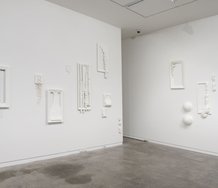
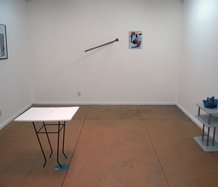
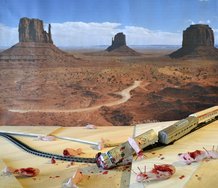
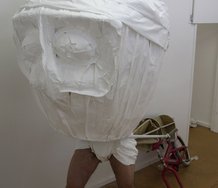
This Discussion has 0 comments.
Comment
Participate
Register to Participate.
Sign in
Sign in to an existing account.